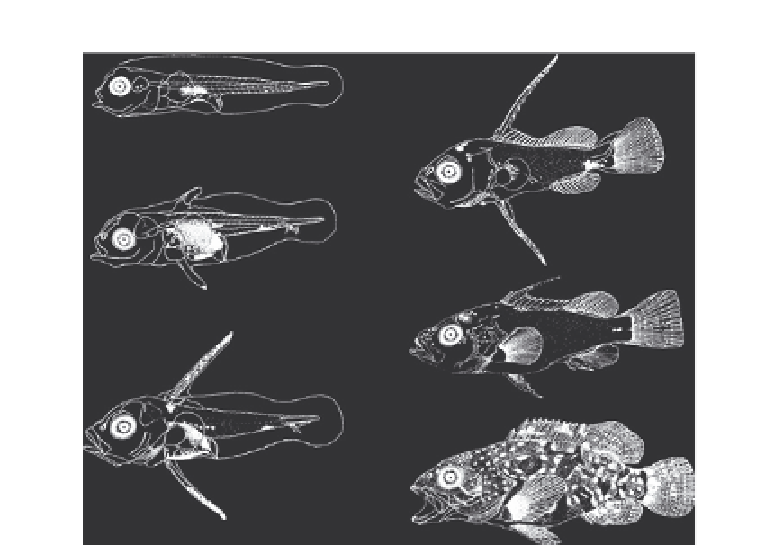Biology Reference
In-Depth Information
D
A
B
E
C
F
Figure 5.2 Metamorphosis of the brown-spotted grouper (Epinephelus tauvina).
(A) Newly hatched larva, 2 mm; (B) 10-day-old larva; (C) 13-day-old larva; (D) 31-day-
old metamorphosing individual; (E) 31 day old, 18 mm; and (F) 50 dpf juvenile,
31 mm. Images reprinted with permission from (
Hussain & Higuchi, 1980
)
will face the water column, and a blind side that will face the substrate
(
Fig. 5.3
). During the transitional metamorphic period, fish swim at an in-
creasing angle to ultimately settle onto the substrate. As in other teleosts, a
new pattern of pigmentation develops during metamorphosis, but only on
the ocular surface of the body (
Table 5.1
).
Particularly rapid and dramatic remodeling also occurs among coral reef
fishes, which undergo changes in body shape and acquire conspicuous adult
pigmentation (
Leis & McCormick, 2006
). Metamorphosis in reef fish en-
ables the transition from a pelagic dispersal stage to a demersal, reef-
associated adult form. This metamorphosis can be extremely rapid, with
some species undergoing their metamorphic changes in pigmentation in
as little as 6 h, or can last several weeks and include several intermediate
stages; for example, goatfish and damselfish undergo 2-3 week metamorphic
processes that include several intermediate shifts in habitat and morphology
(
McCormick & Makey, 1997; McCormick, Makey, & Dufour, 2002
).
Thus, marine teleosts exhibit an astonishing range of metamorphic transfor-
mations that often include substantial morphological changes allowing the
exploitation of different spatial niches within an oceanic environment.

